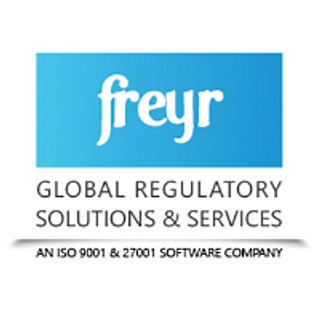REACH vs. TSCA: Comparing EU & US Chemical Regulations
- Freyr Global Regulatory Solutions
- Jun 25
- 2 min read
Chemical regulations such as the EUS range and the US TSCA play an important role in ensuring the security of people and the environment. Both frameworks aim to manage chemical risks, but differ in their job, who they apply to, and what they have to do to comply with. Scope and reporting Rang (Chemical Registration, Evaluation, Approval, Restrictions) applies to all chemicals manufactured or imported in amounts of more than one tonne per year to the EU. It also covers finished products and mixtures of chemicals. The TSCA (Toxic Substance Control Act) applies to most industrial chemicals in the United States, except for products such as pesticides, foods, and drugs. In contrast to Reach, TSCA focuses more on new chemicals or new uses of existing substances. Registration requirements The registration process requires the company to register the substance before it can be sold by the European Chemical Agency (ECHA). Detailed technical documentation with certainty, use and risk is required. If it is not registered, it cannot be sold. This is "no data, no market management." According to TSCA requirements, businesses must submit a preparatory advertisement (PMN) to the U.S. Environmental Protection Agency (EPA) 90 days prior to the introduction of new chemicals. The EPA may assess risk, impose restrictions or deny approval. Chemical risk assessment and testing The company is responsible for certifying that the chemicals are safe. Hazard testing is stipulated based on public exchange of production volumes and key data. Special approval may be required due to high risk of carcinogenicity and persistent contaminants. In contrast, EPAs under TSCA assess risk. The updated TSCA Act requires that if the EPA represents an inappropriate risk, it must check and act on chemicals already in use. However, unless the EPA requires this, the tests are not automatically required. Substance restriction and enforcement Reach has several regulatory lists. List of candidates for highly problematic substances (SVHC) Approval List (Appendix XIV)Restrictions List (Appendix XVII) The TSCA has a central inventory of acceptable chemicals, which adds restrictions per case. There is no equivalent to achieving the approval process. Enforcement is also different. Reach is administered by the ECHA, but enforcement is handled by all EU member states. Therefore, ECHA registration is essential for businesses to sell their products in the EU. The TSCA is enforced by the EPA and can impose strong fines and penalties for violations. Suppliers and compatibility Reach compliance requires a safety data sheet (SDS), product identification, and a notification regarding poison centres. Non-EU companies must appoint a single representative (OD) to manage conformance. TSCA Compliance Compliance requires you to authenticate compliance, report usage, and keep a record for at least five years. Global Compliance Strategy Although both systems are intended for chemical security assessment, Reach is an industry operator and data-related, TSCA is governed by the government and focuses on EPA reviews. Companies working in both markets need to manage a variety of compliance strategies. Many choose to meet Reach's higher standards to simplify access to the global market. Freyr supports companies with reach and TSCA compliance, ensuring chemical registrations and regulatory permits are secured in both the EU and US markets. |







Comments